From the January 2024 issue of Apollo. Preview and subscribe here.
In the two hours I spend at Sammy Baloji’s studio in Brussels, the table we are sitting at accumulates a small library of books and a Wunderkammer of objects. Every ten minutes, Baloji rises from his chair to search for another visual aid to support the point he is making: from 1970s monographs on the art of the Congo Delta to maps made for mining companies operating in the present-day Democratic Republic of Congo. At one point, he returns carrying a metal vessel the size of a beer can, the surface of which is covered in a floral relief.
‘This is an artillery shell from the First World War,’ Baloji explains. ‘When the soldiers were waiting around in the trenches, they used to create images in the metal of these, to keep themselves entertained.’ In Belgium, he says, they’re commonplace. ‘People wanted to keep them because they were made of copper, which keeps liquids warm – you can use them for tea, hot water, whatever.’
Baloji’s interest in the object goes beyond its usefulness as a makeshift thermos. Rather, its artistic potential resides in the raw material from which it was created. The copper was extracted in colonial Africa, shipped to the European metropole and manufactured into lethal projectiles; perhaps even transported back to Congo for use in the Belgian conquest of German East Africa. It is a classic Baloji prop – a visually arresting point of entry to a labyrinth of historical and economic narratives, each one leading down another revelatory path.
Baloji’s practice encompasses photography, film, installation art and – the backbone to all this – archival research into the history and legacy of colonialism. His exhibition and research project Hunting and Collecting, staged initially at Ostend’s Mu.ZEE in 2014, brought together contemporary Congolese photography with works by 19th- and 20th-century Belgian artists to explore the links between industry and hunting in the colonial era.
Similarly, Kasala, or the Slaughterhouse of Dreams, shown at Galerie Imane Farès in Paris in 2020, took inspiration from a hunting horn glimpsed in a domestic photograph of a bourgeois Belgian family living in central Africa in the 1950s. Using metal sourced in part from Congo, he had a copy manufactured in a foundry in Belgium, where craftsmen were instructed to imprint it with scarification based on secret writing systems developed in Congo to render them unreadable by the coloniser. It is an approach that has won his work influential fans. Indeed, days after we meet, Baloji will be namechecked in Art Review’s Power 100 list, ranked just outside the top ten – but still a place above Larry Gagosian.
At a moment when the West’s colonial past and neocolonial present have finally entered mainstream discourse in Europe and North America, it is unsurprising that Baloji’s work has struck a chord. Yet his interests predate this. Born in Lubumbashi, Katanga province, in 1978, Baloji grew up in a country that was being reshaped in the image of its leader, Mobutu Sese Seko. Having taken power in a coup in 1965, Mobutu presented himself as an anti-communist strongman, thus guaranteeing American support. From this point of security, he sought to forge an identity for the vast, culturally heterogenous former Belgian colony, adopting a year zero approach which saw the name of the nation itself changed from ‘Congo’ to ‘Zaire’. He would rule long into the 1990s.
Mobutu’s cultural policies extended to education. At school in the more prosperous part of Lubumbashi – inside the former cordon sanitaire originally devised by the Belgians to keep the city centre free of black Africans – Baloji was taught nothing about the century that had preceded Mobutu’s accession to power. It was only in the early 2000s, as an adult, that he began to get a sense of the violent exploitation and resource extraction that his country had suffered under Belgian rule.
While working as a photographer for the Institut Français, Baloji says, ‘I had this slightly offbeat idea to create a document of my region’s industrial heritage, because Lubumbashi was a city completely planned around the extraction and transport of raw materials – the mines in the area were its lifeblood.’ Katanga is rich in mineral resources crucial to modern industry, from artillery-grade copper to the lithium used in phone batteries.
‘In the course of researching this, I fell on some archives from colonial times,’ he says. ‘And I started to take an interest in these archival images: when industry is at the centre of everything around you, you can’t help but wonder what the centre of that industry is, how it came into being. [The industries in Lubumbashi] used to document everything, from the works themselves to the migrant workers who would come from other countries, or from neighbouring regions.’
Baloji shows me a photograph, taken around 1900, depicting a parade of emaciated African miners, on to which an administrator has painted an identity number for each person. ‘I was profoundly shocked [by these images] and began collecting them where I could. They spoke to me directly of this history of industry and everyday life here, and the political and economic schema that had shaped them […] Essentially, it was this absence of discussion that made me realise the subject was important.’
Baloji looked to the work of anthropologists who, from the 1960s, applied an anti-colonial critique to their discipline; and to South African photographers such as Santu Mofokeng and David Goldblatt, who documented apartheid and its aftermath. By integrating the two, Baloji saw how he could turn his lens towards his own country, a place that had yet to reckon with its recent past. His earliest personal project, Mémoire (2004–06), saw him superimposing details from the colonial-era archival photography he had come across on to his own images of the present-day industrial sites where the former had originally been taken.
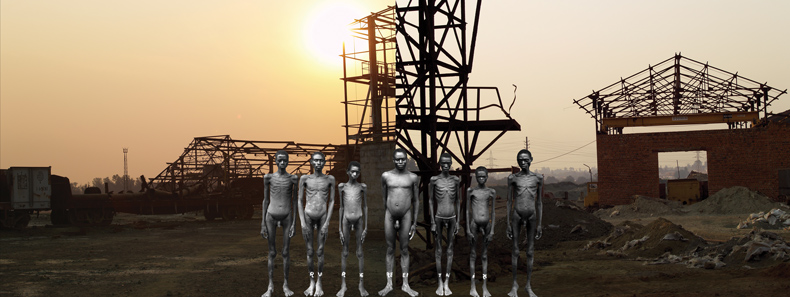
Untitled #4 from the series Mémoire (2004–06), Sammy Baloji. Courtesy the artist and Imane Farès, Paris; © Sammy Baloji

Untitled #12 from the series Mémoire (2004–06), Sammy Baloji. Courtesy the artist and Imane Farès, Paris; © Sammy Baloji
The conceit of Mémoire, which was presented in various forms at events in Africa and in Europe, was simple but powerful. Baloji also turned his critical attention to the discipline in which he worked. Photography, of course, was a medium that came to Congo with the European colonisers, wrapped up in the bad-faith messianism of their so-called mission civilisatrice.
‘Social-scientific rationale was put in place [to justify colonisation] and photography became a tool in that process,’ Baloji says. ‘When you see the photos taken on the first expeditions to the African interior, those social scientists were claiming that photography was objective, because it could only show the truth.’ He snorts with derision. ‘Evidently, even photography has its limits.’
Baloji has frequently exploited such complexities, for instance exploring what the era’s photography hid or omitted. One element of Hunting and Collecting was inspired by a photo album documenting the exploits of big-game hunter Henri Pauwels in the 1900s. In the photos, Pauwels stands surrounded by the corpses of exotic animals. Congolese people, if they are represented at all, are pictured in positions of servility.
For Baloji, it was the history behind the photographs that mattered most. They were commissioned by what was then the Royal Museum of the Belgian Congo in Tervuren to help create wildlife dioramas, a project of Leopold II, the Belgian monarch who exercised brutal personal rule over Congo. Impressed by the dioramas at the American Museum of Natural History in New York, King Leopold had befriended their creator, Carl Akeley, who also convinced him to establish a national park in northern Congo. Thousands of people were expelled from the proposed site, to make way for a wildlife sanctuary. In his exhibition, Baloji drew these threads together by presenting a diorama case identical to Akeley’s early designs, but leaving it entirely empty. Absence, in this case, riffed on a particular history of display and curation that, however indirectly, engendered mass human suffering.
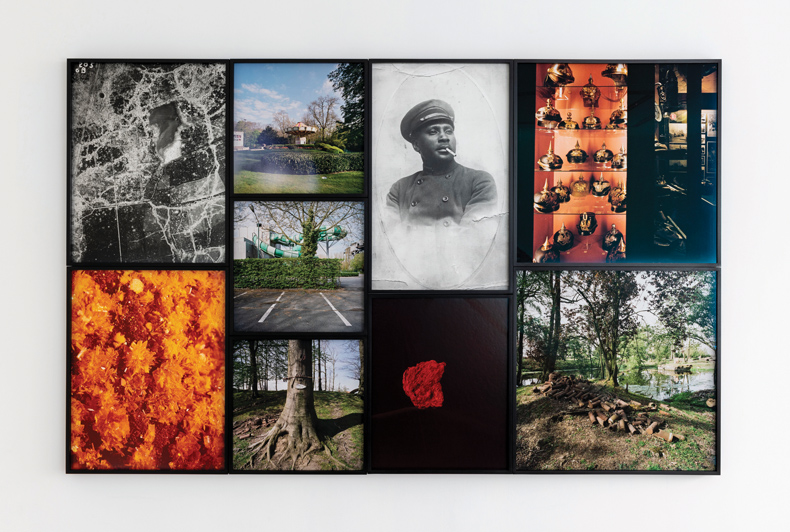
Installation view of The King’s Order to Dance by Sammy Baloji at Galerie Imane Farès, Paris, in 2023. Photo: Tadzio; courtesy the artist and Imane Farès, Paris; © Sammy Baloji
The power dynamics of display interests Baloji. Expanding on the subject, he pulls out a catalogue for the 1902 Venice Biennale. He flicks through, pausing at pages on which sculptures from Central Africa are shown side by side with Roman busts and ancient Greek vases. Text is sparse, limited to captions that offer brief, neutral descriptions of each object. ‘They’re shown as works of art, there’s no hierarchy,’ he says. Yet outside of this context, the African items would have returned to ethnographic museums where they had been labelled ‘primitive’, somehow less sophisticated than the European antiquities with which they share space on the page. For Baloji, understanding the processes that created this sort of hierarchy is key. ‘What interests me as an artist is how we go about creating an alternative discourse, getting to grips with these established, colonial-era ways of thinking and identifying their limits, their weaknesses.’
Baloji moved to Belgium in 2010. He lives close to his studio, in the inner-city suburb of Saint-Gilles, and is in the process of renovating the ground floor of the building that houses it. ‘It’s an investment, I guess. My son’s at school nearby and I don’t drive, so there was never a question of getting a bigger studio out of town.’ Living in the former metropole has been ‘interesting, because you see how the two cultures, I wouldn’t say “poison each other”, but certainly influence each other.’
This leads us to another key theme in Baloji’s work, which he explored in 2021 with K(C)ongo, Fragments of Interlaced Dialogues, at the Palais des Beaux-Arts in Paris. This presented, inter alia, a comprehensive timeline of interactions between the pre-colonial Kongo empire and Europe, as well as a series of drawings based on decorative motifs from that culture. Seen out of context, the latter look uncannily like Op-Art abstractions.
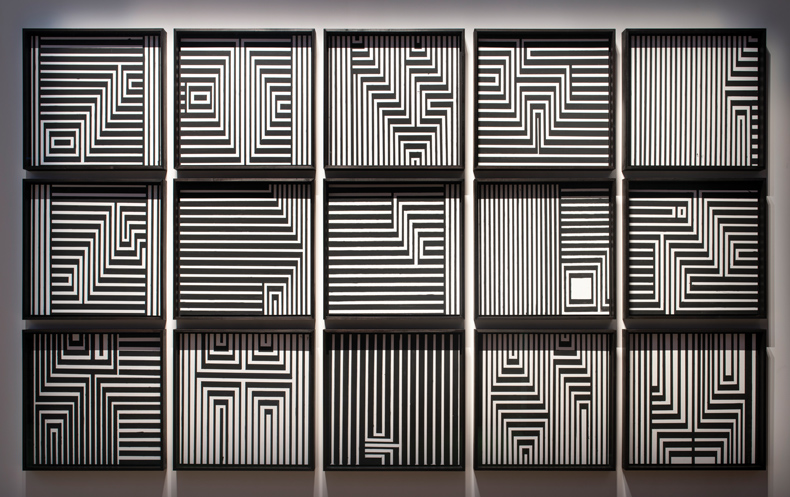
Installation view of K(C)ongo, Fragments of Interlaced Dialogues by Sammy Baloji at the Palais des Beaux-Arts, Paris, in 2021. Photo: Martin Argyroglo; © Sammy Baloji
‘We have this idea that in Congo there wasn’t any culture prior to 1885,’ Baloji says, referring to the year that competing European powers divided Africa between them at the Berlin Conference. ‘[Yet] there are letters from the kings of Kongo to the rulers of Portugal dating from the 15th century. Tell me, if “Congolese” culture only existed from 1885, when did “Belgian” culture begin? Belgium itself was only established in 1830! So how do you read this? You begin to understand how even the creation of nations is basically just an invention.’
To understand how nations are invented, however, you need access to primary sources. In today’s DRC, this simply isn’t possible. On independence in 1960, most of the country’s archives were returned to Belgium and dispersed. ‘They were abandoned, basically forgotten,’ Baloji says. ‘When you look at the Amazon jungles, or at Indonesia, there are detailed climatological records for those places, stretching back centuries. These allow you to measure the impact of human intervention on the climate. But in Congo, there’s nothing like this, because everything was scattered between different institutions.’
The country’s distance from its own records creates a double problem for their caretakers, Baloji says. ‘First, you’re responsible for the history of another people. Second, it means there’s always a delay in responding to emergencies, particularly in light of the climate crisis.’
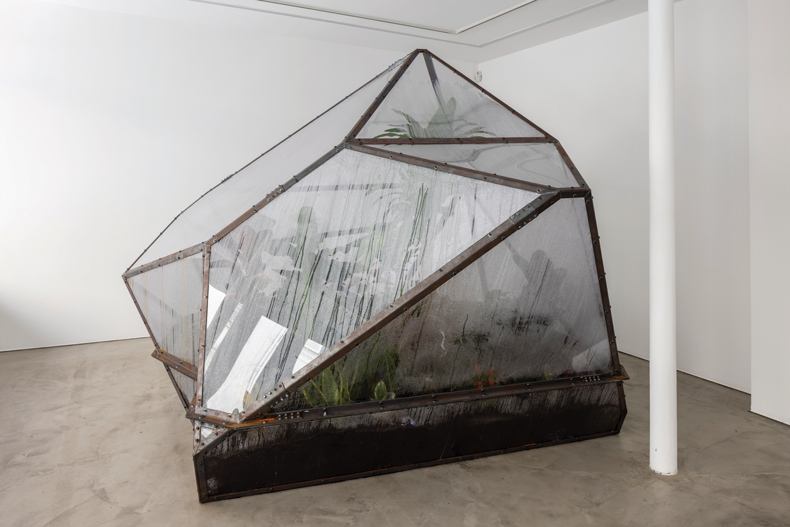
Installation view of The King’s Order to Dance by Sammy Baloji at Galerie Imane Farès, Paris, in 2023. Photo: Tadzio; courtesy the artist and Imane Farès, Paris; © Sammy Baloji
Baloji’s latest show at Imane Farès, The King’s Order to Dance (2023), addressed this explicitly. The first thing you saw on entering was a huge Wardian case of the artist’s own design, based on similar devices that allowed Europeans to bring African flora back home and keep them alive. Shaped like a diamond, it is full of plants native to Congo, creating a parallel between your average garden centre and the rapacious mineral extraction that continues in the region to this day. There was also a film in which we saw archival footage of Congolese students enrolled in the technical colleges set up towards the end of colonial rule.
‘The first university in Congo, in Kinshasa, was only established in 1954,’ Baloji says. Thus, on independence, there were only 17,000 intellectuals – astonishingly, known to the Belgians as evolués – in a population of more than 60 million. Any culture budget is pocketed by the official presiding over it – ‘they have to get rich quick, as they’ve no idea where they’ll be in four years’ – and most of the country’s artistic heritage now resides in Western museums.
As a corrective, Baloji set up the Lubumbashi Biennale in 2008. The festival is now a major art event, yet still receives no state support. ‘I’d been invited to the Bamako biennale in 2007 […] It was revelatory,’ he says. ‘I thought, “Why, in Katanga, whose raw materials did so much to create our idea of modernity, is its intellectual culture barely represented? How is that our raw materials travel, but our people can’t?”.’
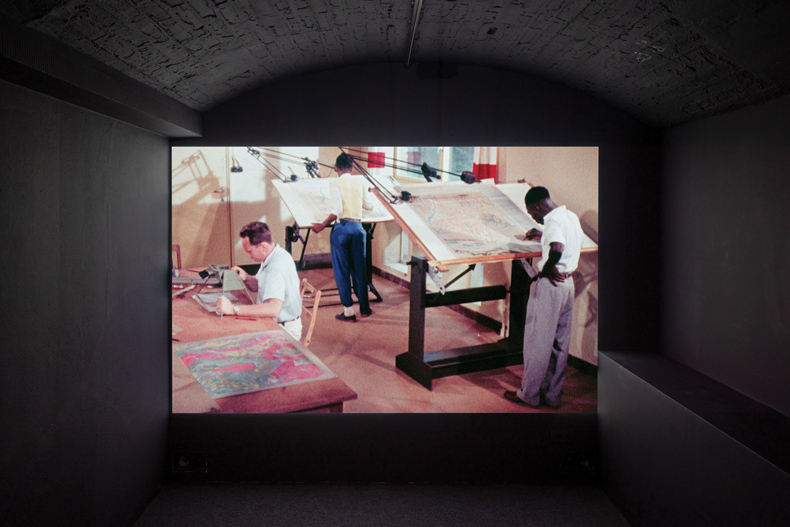
Installation view of The King’s Order to Dance by Sammy Baloji at Galerie Imane Farès, Paris, in 2023. Photo: Tadzio; courtesy the artist and Imane Farès, Paris; © Sammy Baloji
In a recent interview, Baloji described himself simply as a Congolese photographer. ‘I started as a photographer,’ he says. ‘And then I began to question the medium. [But] I remain anchored in photography, where everything is a question of framing.’ As for the ‘Congolese’ part, the answer is straightforward: ‘I still have my Congolese passport, which in some places – Britain, for example – makes things really complicated. I’ve never been there because it takes three months to apply for a visa. But I have a show at Goldsmiths in October – so, with any luck, that will change.’
It strikes me as odd that someone of Baloji’s stature – he has work in the Tate – might be deprived a passport for months on end while waiting for permission to enter the UK. Odd, but given the connections Baloji’s work seeks to bring to light, perhaps not surprising. ‘We need to take stock of where we stand, both in the West, and, for instance, in Africa […] because these two spaces are essentially segregated. But when you exclude the Other, whoever that might be, you have no chance of knowing where you stand. You can’t bring solutions to the table when you haven’t wiped it clean.’
From the January 2024 issue of Apollo. Preview and subscribe here.
Unlimited access from just $16 every 3 months
Subscribe to get unlimited and exclusive access to the top art stories, interviews and exhibition reviews.

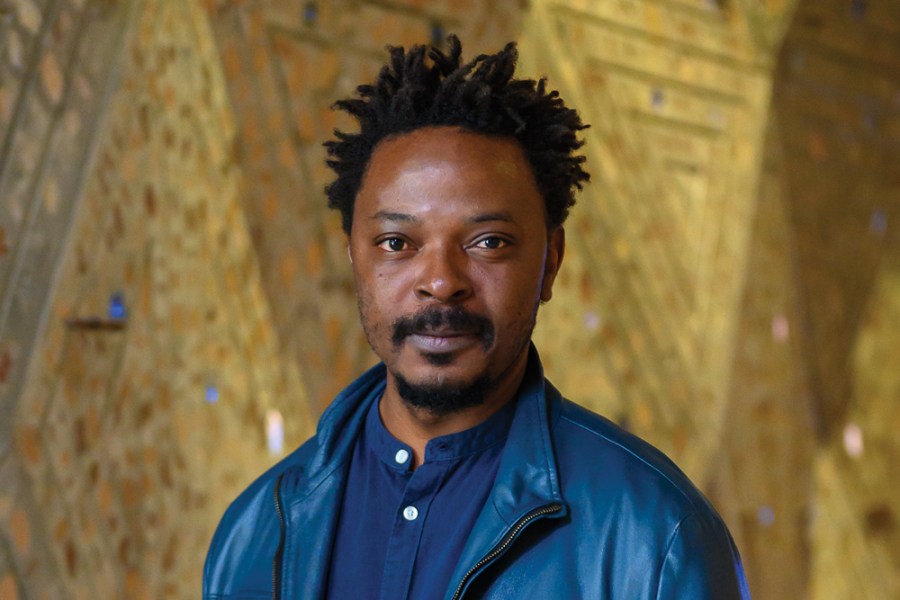
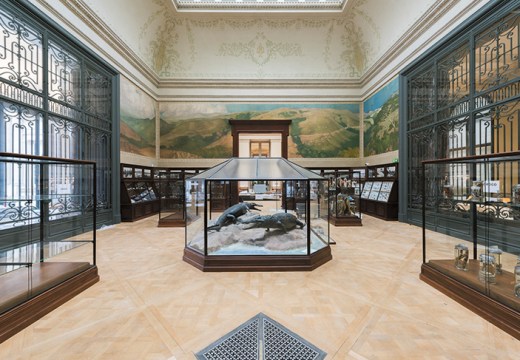
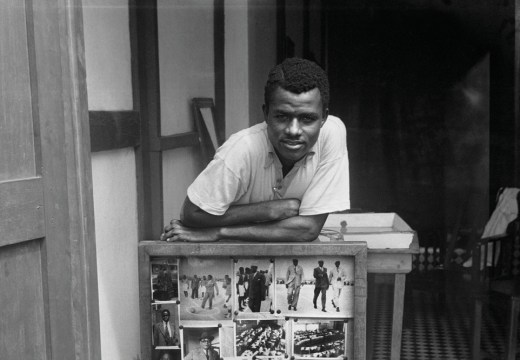
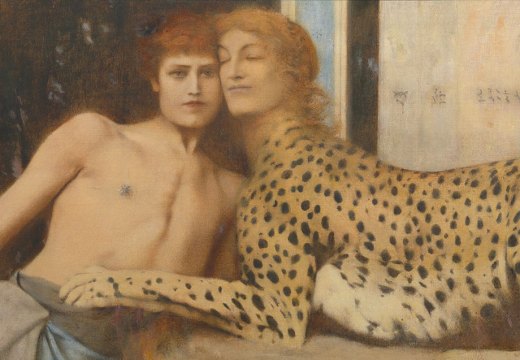









![Masterpiece [Re]discovery 2022. Photo: Ben Fisher Photography, courtesy of Masterpiece London](http://www.apollo-magazine.com/wp-content/uploads/2022/07/MPL2022_4263.jpg)
It’s time for the government of London to return to its rightful home